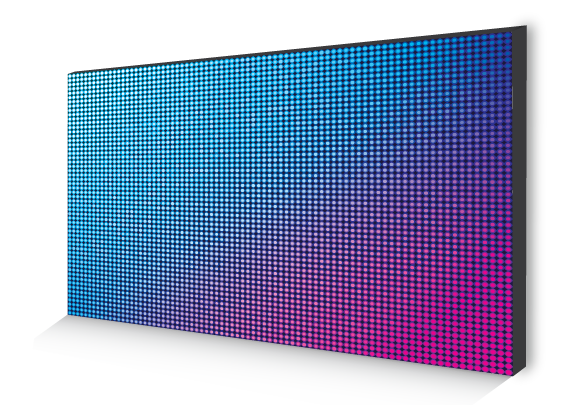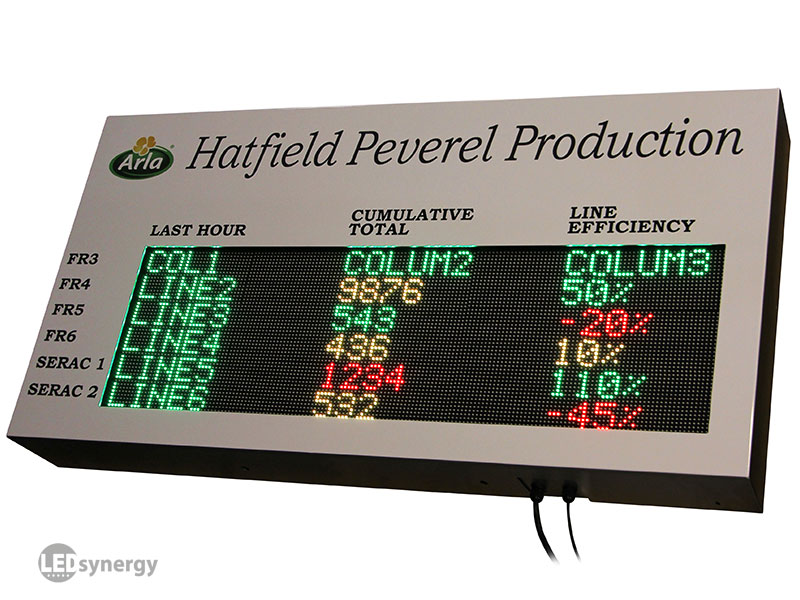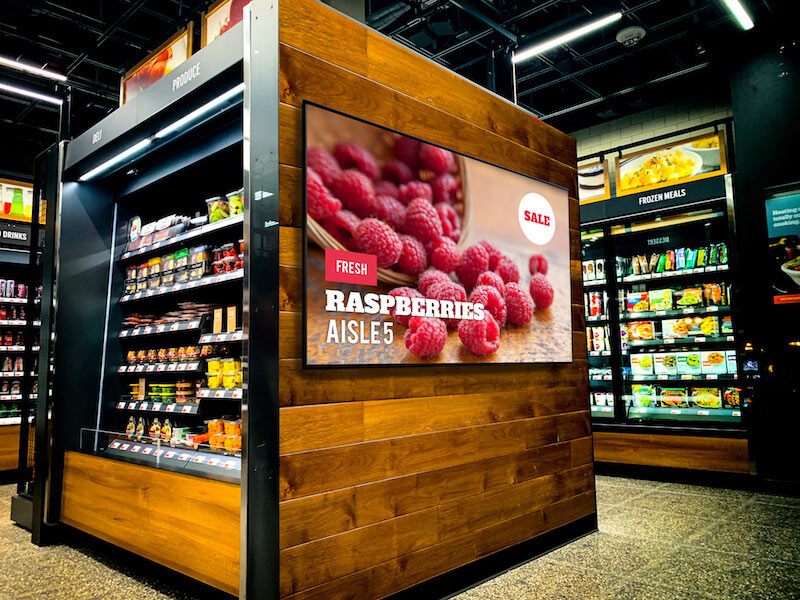Good Ideas For Selecting Quality Rental Led Display
Good Ideas For Selecting Quality Rental Led Display
Blog Article
How Important Is Durability And Weather Resistance When Researching Led Displays?
Take into consideration the durability and weather-proofing of the LED display particularly if you intend to put it in the outdoors or in areas that see a lot of traffic. Why they're important:
1. Longevity as well as cost-Effectiveness
Durability. LED displays that are durable can stand up to impacts, vibrations and other mechanical strains. Displays last longer and require less frequent maintenance or replacement. This means a greater overall cost efficiency.
Application: Durability is important in environments that are prone to being damaged, such as public spaces, sports stadiums as well as rental markets.
2. Outdoor Performance
Weather Resistance. Outdoor LED displays are exposed to weather conditions that change constantly like rain, snow, wind, temperature fluctuations, etc. They are built for robust operation in extreme weather conditions.
IP Rating: IP rating is the protection level from dust and water. For outdoor displays, at least IP65 (protection against water jets and dust) is recommended. This ensures the display can stand up to extreme conditions without causing short-circuits or corroding.
Applications Weather resistance is a must for outdoor installations such as billboards, stadium screens or digital signage. If a display fails due to bad weather can result in costly repairs and even downtime.
3. Temperature Resistant
LED displays are vulnerable to temperatures that are extreme. They can be subjected to both cold and hot extremes that can impact their performance. Displays of high quality are designed to function across a range of temperatures. They typically include cooling or heating systems that keep their performance at optimum levels.
Application: For areas with extreme temperatures, like hot deserts or winters that are cold in the north, choosing a display that is temperature resistant will ensure consistent operation all entire year.
4. and Moisture Protector and Moisture Protector
Waterproofing LED displays The LEDs with waterproofing prevent moisture from entering into internal components, which could result in short circuits or even damage. This is of particular importance in regions with high humidity and heavy rainfall.
Displays that are waterproofed in areas close to coastlines or water bodies is important to prolong the life of the display as well as prevent problems.
5. UV Protection for Sunlight Durability
UV Resistance: Long-term exposure to sunlight can cause discoloration and deterioration of the display materials. Screens that are UV-resistant are coated with a special coating that helps protect against damaging UV rays. The screens maintain their look and performance for years.
Application UV resistance is crucial when you live in sunny locations and where displays are exposed to direct sunlight. This can prevent the display from discoloring and deteriorating image quality.
6. Safety and Compliance
Fire Resistance: Some environments require displays to contain fire-proof properties in order to comply with safety rules. This is especially important in indoor settings where high usage is common, like concert venues or malls.
Application: Ensuring that the display is in compliance with the relevant safety standards doesn't just safeguard the investment, but also assists in complying with local regulations to avoid legal issues.
7. Reduction of Downtime and Maintenance
Low maintenance. Weatherproof and durable displays need less frequent maintenance since they are more resistant to environmental harm. This can reduce downtime and cost of maintenance.
Application: In cases which require only minimal maintenance such as emergency information or transportation hubs, where interruptions could be disruptive or expensive, durability and weather resistance will make sure that the display is functioning.
Conclusion:
To ensure that LED displays are long-lasting, reliable and affordable, they need to be able to withstand the elements and extreme weather conditions, especially in locations that are high-stress or outdoors. They protect your investment by ensuring the display can withstand harsh conditions, which reduces the need for repairs and ensuring a constant performance. If you are using a display that is heavily affected by environmental factors It is crucial to consider durability and weather resistance when researching LED displays. Take a look at the most popular smd screens for website recommendations including church led wall, outdoor screen led, flexible led display, outdoor digital screens, led light sign board, led display transparent, outdoor screen led, led the wall, board led, led display transparent and more.
What Is The Importance Of Viewing Angle In Led Research On Display?
It is important to think about the angle of view when looking into LED displays. Especially for applications where it will be viewed at various angles and from various positions. Here's why the viewing angle is essential:
1. Uniform Image Quality
Definition An angle from which to view an LED display refers to the highest angle from which it can be observed without compromising the quality of the image (usually in terms of brightness or the consistency of color). The viewing angle can be determined in both vertical and horizontal directions.
The wider the viewing angle the greater the likelihood that the image will be constant. This means that colors don't change, and brightness does not decrease when viewing on the sides or below/above.
2. Audience Experience
Impact on Large Venues Large venues, such as arenas, concert halls or conference centres, the audiences are distributed across a wide area. The smaller the angle of view the worse for those seated at an acute angle to the screen.
Application: For large-scale installations or events in which the public is spread out in a large circle around the screen A wide viewing angle is required to ensure everyone has a clear and vibrant view of the content.
3. Insufficiency of Public Spaces
Public Displays: The angle of view is very important in settings such as shopping centers as well as transportation hubs, and outdoor advertising. People will be observing the display in all directions. The display's ability to engage and attracting passersby would be constrained by a limited viewing angle.
Application Digital signage: When employed in public spaces The wide viewing angle will increase the reach of the display. This ensures that information is easily visible from all angles and looks attractive.
4. Content Consistency
Brightness and color uniformity: Displays with poor viewing angles can show color shifts or decreases when viewing from positions away from the center. This is especially problematic in relation to content that is brand-related, and where color accuracy can be crucial.
Application: In environments where brand recognition and color consistency are critical, such as corporate displays or retail displays Wide viewing angles ensures that the display maintains its intended appearance from all viewing positions.
5. Installation Flexibility
The flexibility of placement Flexibility of Placement: A display with an extensive viewing angle can allow to be more flexible regarding the places it can be. It offers more innovative placement options such as wrapping the display around columns or putting it in areas that viewers approach from a variety of directions.
Application Wide viewing angle is ideal for LED displays that are creative or displays that are architectural in nature. They can be utilized in galleries and museums to create a sense of immersion.
6. Renting and staging using the performance
Event Settings: A wide view angle allows the display to perform in a variety of settings. This will ensure that the display will be of the same quality no matter the location of your audience.
Application: For events such as trade shows, concerts and exhibitions, where there is the possibility that people be moved or the exhibit may be seen from different locations, the wide viewing angle allows all attendees to see a clear, engaging view of content.
7. Impact on ROI
Maximizing Visibility: A display that has a wide viewing angle is more effective at reaching out to a larger audience, which will increase the impact of your display and increase return on investment (ROI). This is especially relevant for informational or advertising screens, where visibility is crucial to achieve desired outcomes.
Application: In commercial installations, making sure that the display can be viewed at different angles will improve engagement and therefore, the effectiveness of the information being displayed.
Conclusion:
The angle of the view directly impacts the display's visibility, reliability and efficiency. This is especially important in environments with an extensive audience, displays that may be seen from different angles, or where content consistency is vital. When evaluating LED displays an expansive viewing angle should be considered first to ensure the display is able to meet the requirements of the particular application and offers a superior viewing experience for all viewers. Check out the best quality rental led display for blog recommendations including video wall church, led transparent screen, transparent led panel, screen led display, outdoor screen led, flexible led screen, transparent display monitor, transparent screen monitor, video wall tv, outdoor digital screens and more.
What's The Purpose Of The Importance Of Content Management System?
Content Management System (CMS) and compatibility are crucial factors to consider when researching LED displays, especially for applications where content needs to be frequently updated and controlled across multiple locations, or incorporated with other digital systems. Here are some reasons for why CMS and compatible displays are important.
1. Content Management is simple
CMS Functionality. A powerful CMS lets you easily schedule and manage your content for LED screens. It provides users with a user-friendly interface to upload videos, organizing playlists and setting display times, making it simpler to ensure content is current and up-to-date.
Important: For companies that have to change their content regularly (such as retail stores or advertising networks), a robust CMS can streamline operations, reducing time and effort needed to manage displays.
2. Remote Control and Flexibility
Remote Management A great CMS can allow remote management of displays. This allows content to be updated remotely from any location. This is particularly important for companies that have multiple displays on different websites, as it allows centralized control as well as ensuring consistency in communication.
Application Remote management capabilities are crucial in situations such as corporate communications, digital signage networks or educational institutions that have displays that are spread across multiple locations. They are also essential for maintaining a consistent and efficient distribution of content.
3. Scheduling, Automation, and Automated Workflow
Content Scheduling - A CMS which incorporates scheduling tools will allow you to plan your content in advance, so the right messages can be displayed at the right time. This can be useful to target particular audiences at specific periods of the day, or during particular events.
Automated Content Delivery The automated delivery of content reduces the need to manually update, thereby saving time and ensuring that it is always up-to date. This is especially useful for dynamic environments, such as airports, hotels or large spaces.
CMS CMS is an excellent tool for businesses managing content 24/7, such as broadcast news, transport hubs or big retailers. It has features like automation and scheduling to help them run their business efficiently.
4. Compatibility of existing systems
Integration is crucial for an efficient operation. CMSs that are able to be connected to various other platforms, tools and digital platforms, such as analytics, software for creating content or CRM systems are of great value.
The LED display that is compatible with the system is ideal for locations that require digital signage to be integrated with other systems. This includes smart cities, retail spaces which integrate customer information, and large corporate networks.
5. Scalability
Future Expansion : A scalable CMS will grow with you, which allows for easy addition of more displays, the management of large content libraries, or expansion to new locations, without the need to overhaul the entire system.
Application: For businesses planning to expand their operations like retail chains, hospitality groups or multinational corporations a scalable CMS ensures that the digital signage infrastructure they have in place can adapt to the changing needs of the business.
6. Variety of Content and Support
Content Types Content Types: A CMS must be able to accommodate a range of formats for content like images, video and text. Interactive content is also available. This flexibility allows for the creation of stimulating and diverse content that can be specific to the audience you are targeting.
Application: In environments where content diversity is key for entertainment places, educational institutions or advertising networks the capability to handle multiple content types ensures that the display can satisfy all needs for content.
7. Security and access for users
Role Based Access: A CMS that provides permissions based on role allows various levels of access to be granted to different users. This is vital to ensure only authorized users are able to modify important content.
Security The security of a CMS that is secure is essential to safeguard the user from access by unauthorised persons. Unauthorized access could lead inappropriate or damaging information to be shown.
Applications: Role-based access and security are vital for businesses where multiple users manage content. These include corporations, universities, and government bodies.
8. Real-time updates of content
Live Content Integration: In certain applications, it's essential to be able to change content in real-time or integrate feeds from live sources (such social media, news or live coverage of events). This is crucial in broadcasts, events, and other scenarios that require timely content.
Application: In settings, like sports stadiums news stations or venues for live events, real-time updates of content will ensure that the public receives the most up-to-date information. This increases the value and impact of the display.
9. Analytics and Reporting
Performance Metrics. A quality CMS will have analytics and reporting features which allow you track how your content performs. Understanding the interaction of viewers, content efficiency and ROI is crucial for maximizing the quality of your content.
Application: For businesses that rely on data for decisions, like advertisers, retail stores or public information systems (PIS), analysis and reporting are vital in order to comprehend and improve the impact of digital signage.
Conclusion:
A powerful CMS along with strong compatibility, are crucial elements of an effective LED strategy. They enable efficient content management and seamless integration with existing systems, and provide the flexibility and scalability needed for diverse applications. When you are looking at LED displays, you should look for an CMS that is compatible with your needs for operation, is compatible with an array of types of content, provides solid security and the necessary tools to ensure effective content delivery and performance tracking. These features will enhance the functionality and impact of the LED displays and increase their ROI. Take a look at the most popular lightweight led screen for website examples including led the wall, outdoor led panel, led panels, transparent screen, led panel transparent, outdoor led panel, tv led wall, translucent led screen, led panels, led screen display rental and more. 